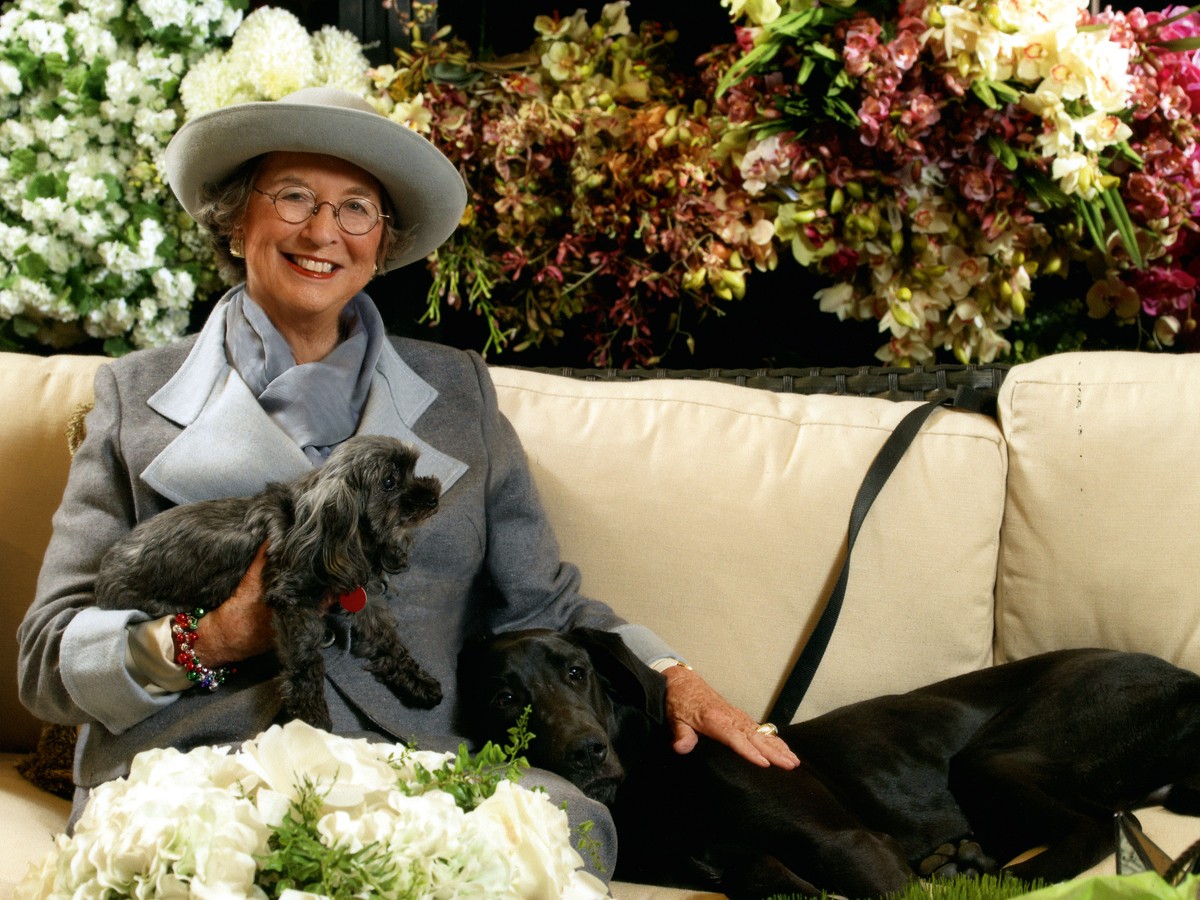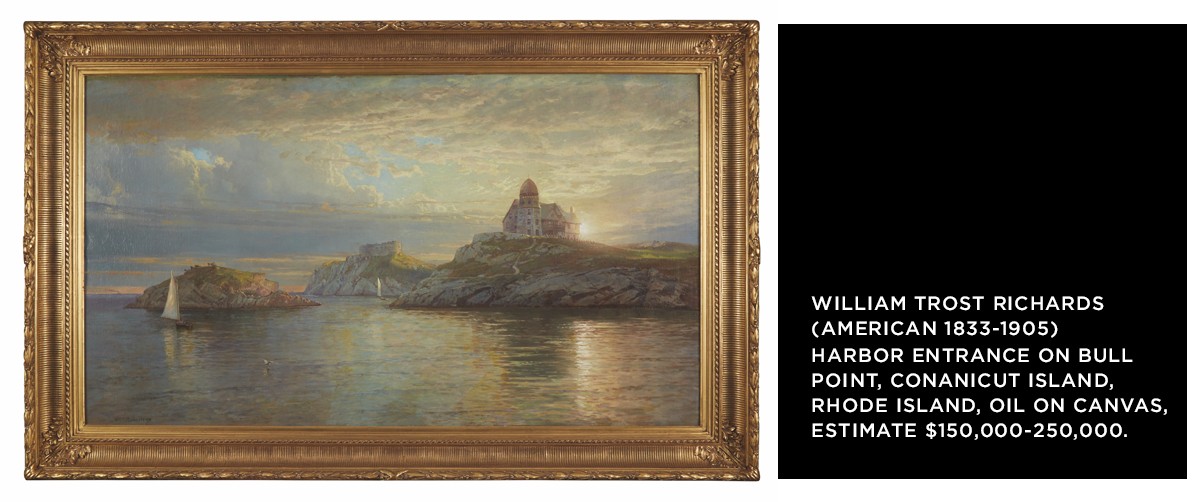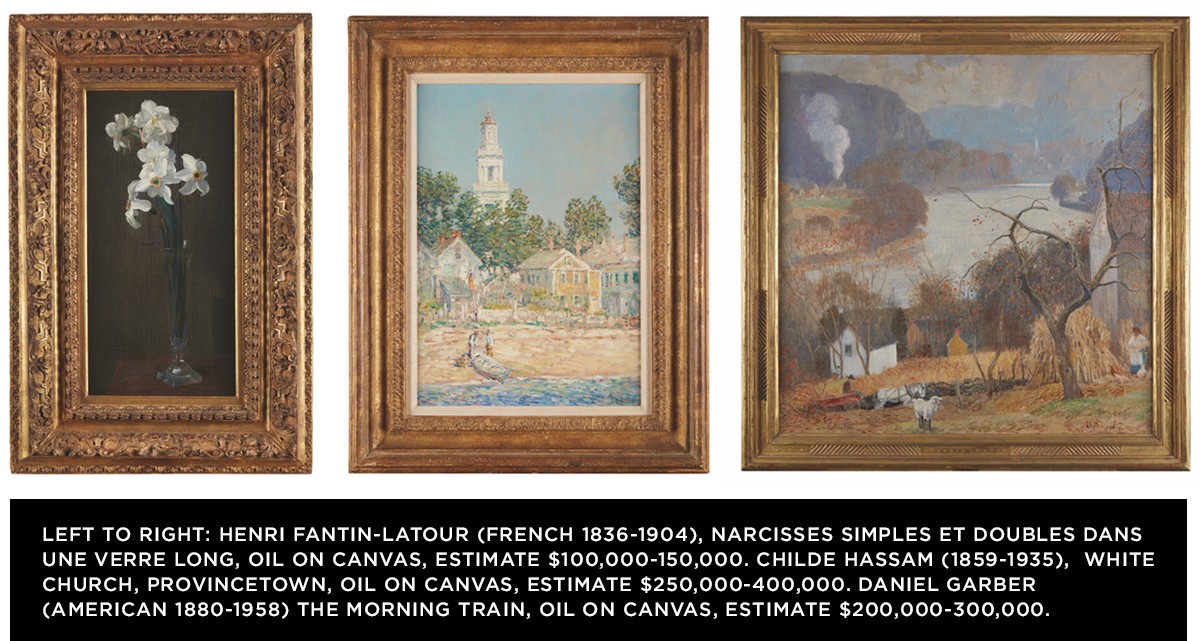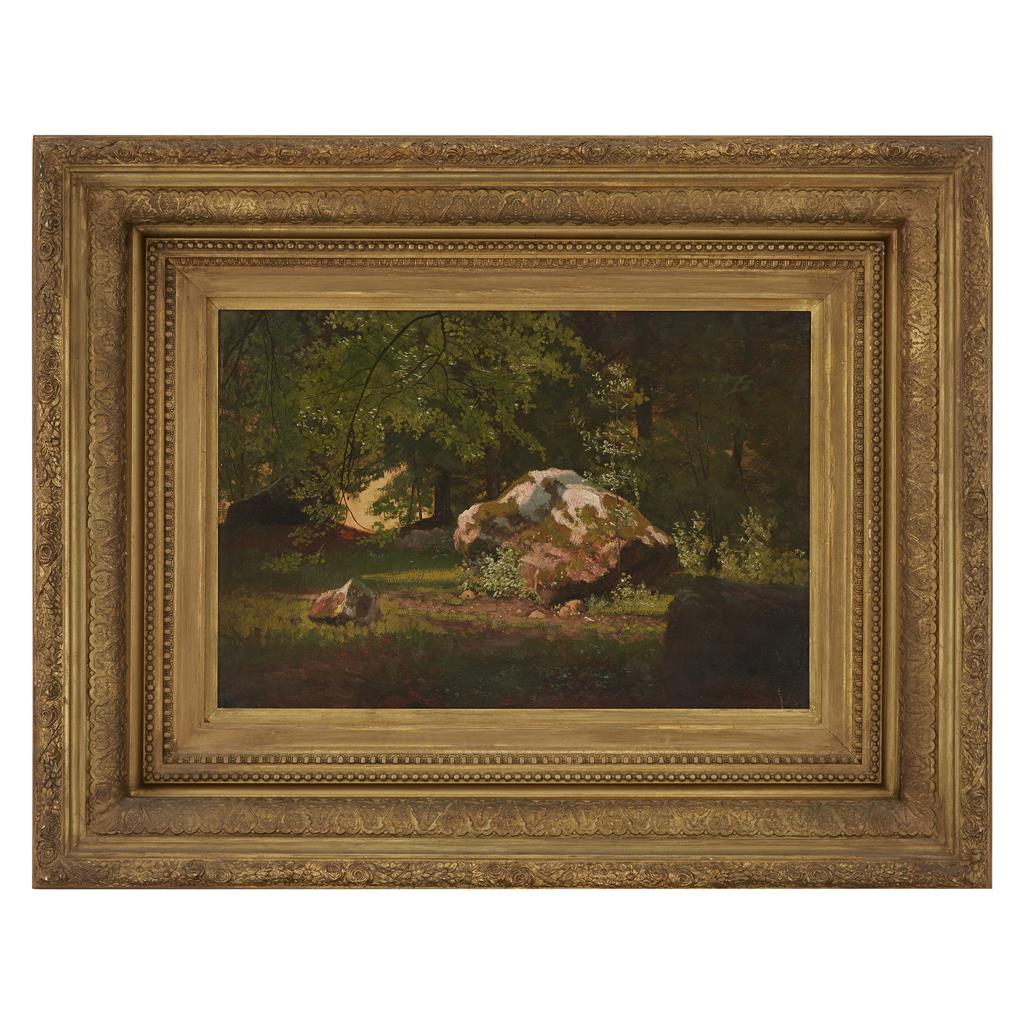Freeman’s April 29 auction of The Collection of Dorrance ‘Dodo’ H. Hamilton was a resounding success with 99% of the works sold, and six auction records. Freeman’s first-floor gallery was standing room only; the sale drew international interest from collectors who competed in the room, on the phone and over the internet for works, with many of the lots doubling and tripling their estimates. Of the 139 lots offered, 84% sold at or above the estimate. The auction lasted nearly four hours and totaled $4.9 million, including buyer’s premium.

“Today’s results are truly a testament to the caliber of the collection,” Alasdair Nichol, Freeman’s Chairman and the principal auctioneer of Sunday’s sale said. “Mrs. Hamilton’s legacy in Philadelphia and beyond is well-known and wide-reaching, and we were honored to have had a chance to bring so much of her personal collection to auction.”
From champagne receptions to gallery talks, Freeman’s held special events in London, Paris, Hong Kong and New York with highlights from the collection on view to a wide range of international interest. The Main Line and Philadelphia exhibitions had extended viewing hours, and works were thoughtfully presented in museum-quality settings. A lavishly produced, nearly 200 page catalogue included specialist essays on most of the artists included in the collection, as well as full-color illustrations and detailed images of each lot.
 Mrs. Hamilton’s collection included several paintings by noted Impressionists. The sale opened with a painting by Eugene Boudin, oft-considered the “father” of Impressionism. “La Plage de Berck” beautifully captures the changing effects of light on the water and the sky, and eventually achieved $162,500, doubling the low estimate of $80,000. Lush and colorful landscapes by later French Impressionists Armand Guillaumin (Lot 8), a close friend of Paul Cézanne, and Henri Jean Guillaume Martin (Lot 9), known for their thick use of color, exceeded their estimates, achieved $40,625 and $50,000, respectively. “Chestnuts in Bloom” by Sir Alfred Munnings (Lot 12) executed in the 1920s, depicts a view of the lawn and paddocks at Munnings’ home ‘Castle House’ in Dedham and attracted heated bidding before selling for $162,5000 against an estimate of $40,000-60,000.
Mrs. Hamilton’s collection included several paintings by noted Impressionists. The sale opened with a painting by Eugene Boudin, oft-considered the “father” of Impressionism. “La Plage de Berck” beautifully captures the changing effects of light on the water and the sky, and eventually achieved $162,500, doubling the low estimate of $80,000. Lush and colorful landscapes by later French Impressionists Armand Guillaumin (Lot 8), a close friend of Paul Cézanne, and Henri Jean Guillaume Martin (Lot 9), known for their thick use of color, exceeded their estimates, achieved $40,625 and $50,000, respectively. “Chestnuts in Bloom” by Sir Alfred Munnings (Lot 12) executed in the 1920s, depicts a view of the lawn and paddocks at Munnings’ home ‘Castle House’ in Dedham and attracted heated bidding before selling for $162,5000 against an estimate of $40,000-60,000.
The undoubted highlight of Mrs. Hamilton’s fine art collection was a painting by Paul Cézanne entitled “La Vie des Champs,” which sold to a phone bidder for $1,450,000. The painting’s original owner was the legendary art dealer Ambroise Vollard, who gave Cézanne his first exhibition in 1895, and whose clients included Dr. Albert C. Barnes of Philadelphia. The painting then passed to Prince Antoine Bibesco, a Romanian aristocrat, who counted Marcel Proust as a close friend amongst the many celebrated artists, musicians and writers who formed his circle. It subsequently passed through the hands of noted dealers such as Pierre Matisse, Alex Maguy and Acquavella Galleries before entering the collection of Elinor Dorrance Ingersoll, ‘Dodo’ Hamilton’s mother.
 Throughout her collection, and most notably her paintings, Mrs. Hamilton expressed her love for nature, surrounding herself with the landscapes, the seascapes and the still-lifes that she loved. The elegant floral portrait “Narcisses Simples et Doubles Dans un Verre Long” (Lot 6) by Henri Fantin-Latour sold for $286,000, against an estimate of $100,000-150,000. Despite his close friendship with many Impressionists, the artist preferred to paint his still-lifes indoors, where he could control the light and the atmosphere. The painting shows the extent to which Fantin’s still lifes embraced a pure aesthetic, prepared with subtle color contrasts; he provided this bouquet of flowers with the dignity, mystery and even sensuality of a portrait. In a letter to his friend Otto Scholderer in 1872, the artist wrote, “My life is among flowers.” Also included in the collection were four watercolors from the “Les Liliacées” series by Pierre-Joseph Redouté, which originally belonged to Empress Joséphine de Beauharnais, first wife of Napoleon I. Each watercolor exceeded their estimates; “Iris Germanica” (Lot 2) drew demand in the salesroom and sold for $200,000 against a low estimate of $50,000, making it the third highest price for a watercolor from the Les Liliacées series ever sold in the United States. A seascape by American artist William Trost Richards (Lot 14) more than doubled its high estimate of $30,000, selling for $81,250.
Throughout her collection, and most notably her paintings, Mrs. Hamilton expressed her love for nature, surrounding herself with the landscapes, the seascapes and the still-lifes that she loved. The elegant floral portrait “Narcisses Simples et Doubles Dans un Verre Long” (Lot 6) by Henri Fantin-Latour sold for $286,000, against an estimate of $100,000-150,000. Despite his close friendship with many Impressionists, the artist preferred to paint his still-lifes indoors, where he could control the light and the atmosphere. The painting shows the extent to which Fantin’s still lifes embraced a pure aesthetic, prepared with subtle color contrasts; he provided this bouquet of flowers with the dignity, mystery and even sensuality of a portrait. In a letter to his friend Otto Scholderer in 1872, the artist wrote, “My life is among flowers.” Also included in the collection were four watercolors from the “Les Liliacées” series by Pierre-Joseph Redouté, which originally belonged to Empress Joséphine de Beauharnais, first wife of Napoleon I. Each watercolor exceeded their estimates; “Iris Germanica” (Lot 2) drew demand in the salesroom and sold for $200,000 against a low estimate of $50,000, making it the third highest price for a watercolor from the Les Liliacées series ever sold in the United States. A seascape by American artist William Trost Richards (Lot 14) more than doubled its high estimate of $30,000, selling for $81,250.
Paintings formerly in the collection of prominent Philadelphia collectors Meyer and Nancy Potamkin surpassed their estimates: “The Walk Around Island” by Childe Hassam (Lot 23) achieved $430,000 and Maurice Prendergast’s “The Point, Gloucester” (Lot 25) sold for $292,000. Other notable works that attracted attention in the room and from phone bidders were by Pennsylvania Impressionists: “Children in the Garden” by Martha Walter (Lot 34) sold for $21,250, two works by Daniel Garber (Lots 32 and 33) sold for $137,500 each, and “Girard Trust Building: Third Liberty Loan, 1918” by Paulette van Roekens (Lot 35) set an auction record for the artist when it sold for $46,875.
Six auction records were set for American artists Horace Carpenter (Lot 30), Carl Johan David Nordell (Lot 29), Walter King Stone (Lot 27), Adolphe Borie (Lot 31), Paulette van Roekens (Lot 35) and Edgar Hewitt Nye (Lot 28).

“ROCK AND FOREST STUDY” Signed ‘Albert Bierstadt’ bottom right, oil on paper
laid down to canvas 13 x 19 in. (33 x 48.3cm)
Jewelry from Mrs. Hamilton’s collection will be offered in Freeman’s May 9 Fine Jewelry auction. The 17 pieces of jewelry include an impressive 16.56 carat diamond solitaire ring (Lot 1016), which accompanied the painting by Cézanne to London, Paris and Hong Kong in January, and is estimated at $600,000-800,000. Additional highlights from the forthcoming sale include an Art Deco diamond covered bracelet watch by Cartier ($30,000-50,000) and an Art Deco diamond and rock crystal choker ($30,000-50,000).
Mrs. Hamilton’s furniture and decorative arts followed the fine art and garnered similar success. She collected across a range of categories, surrounding herself with what she loved without concerns for trends. The wicker and rattan furniture drew fierce competition with some lots going for as much as ten, 20 and 30 times their estimate. All of the American and European furniture offered sold above estimate. Furniture by Stickley, Meissen and Staffordshire porcelain, and Newcomb College Pottery were equally as popular among buyers. These works were reflective of Mrs. Hamilton’s personal style and love of the natural world in its many forms.

























